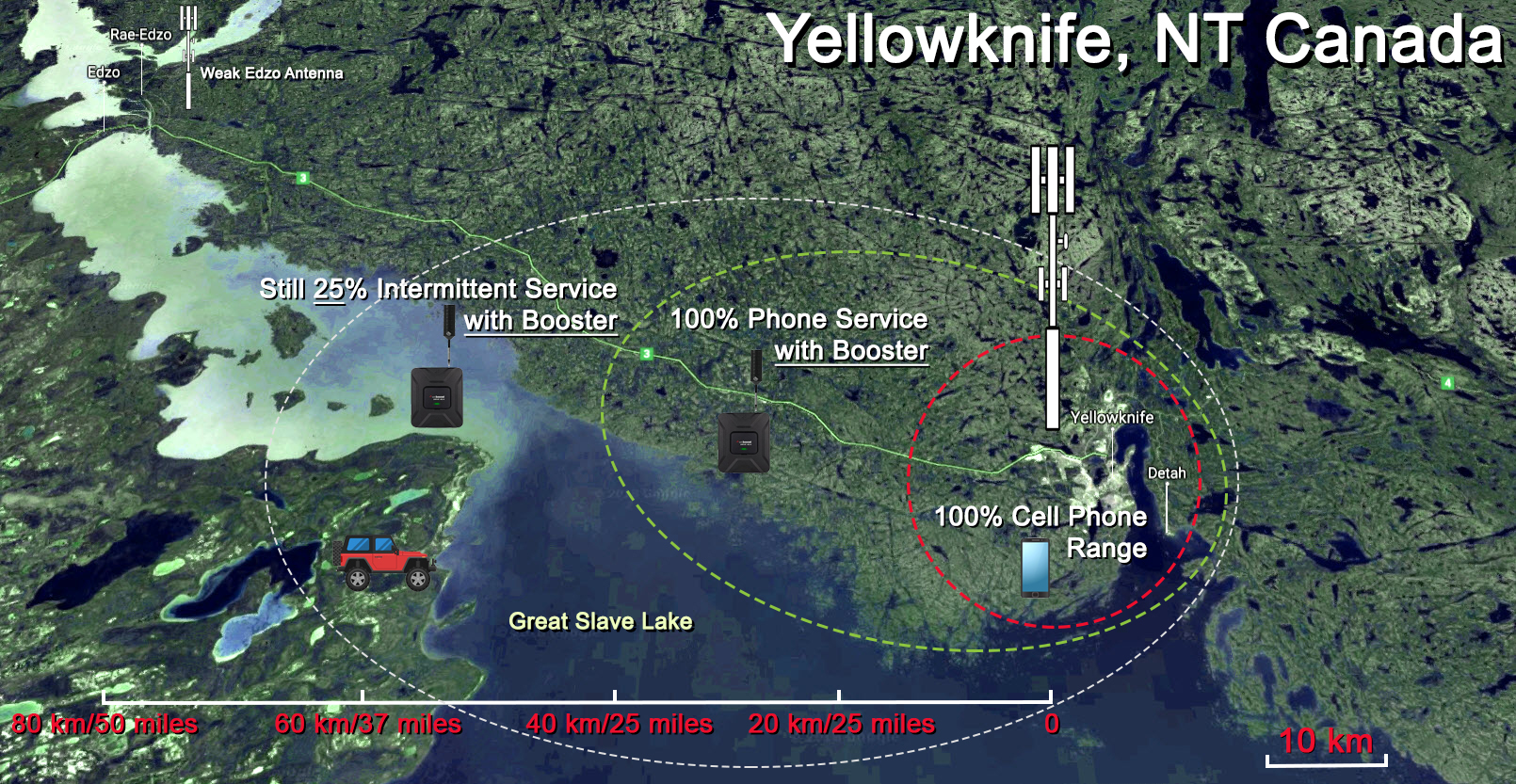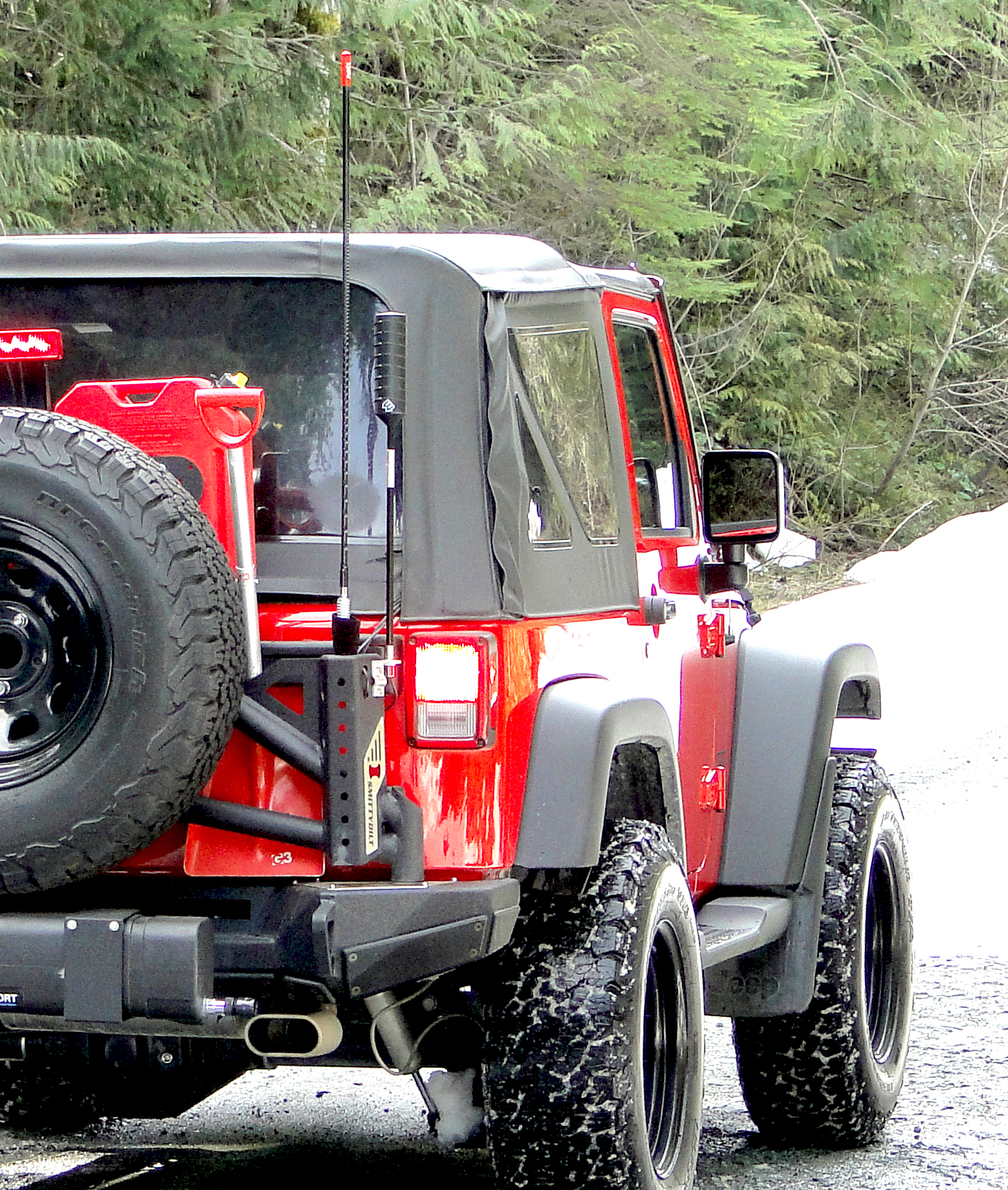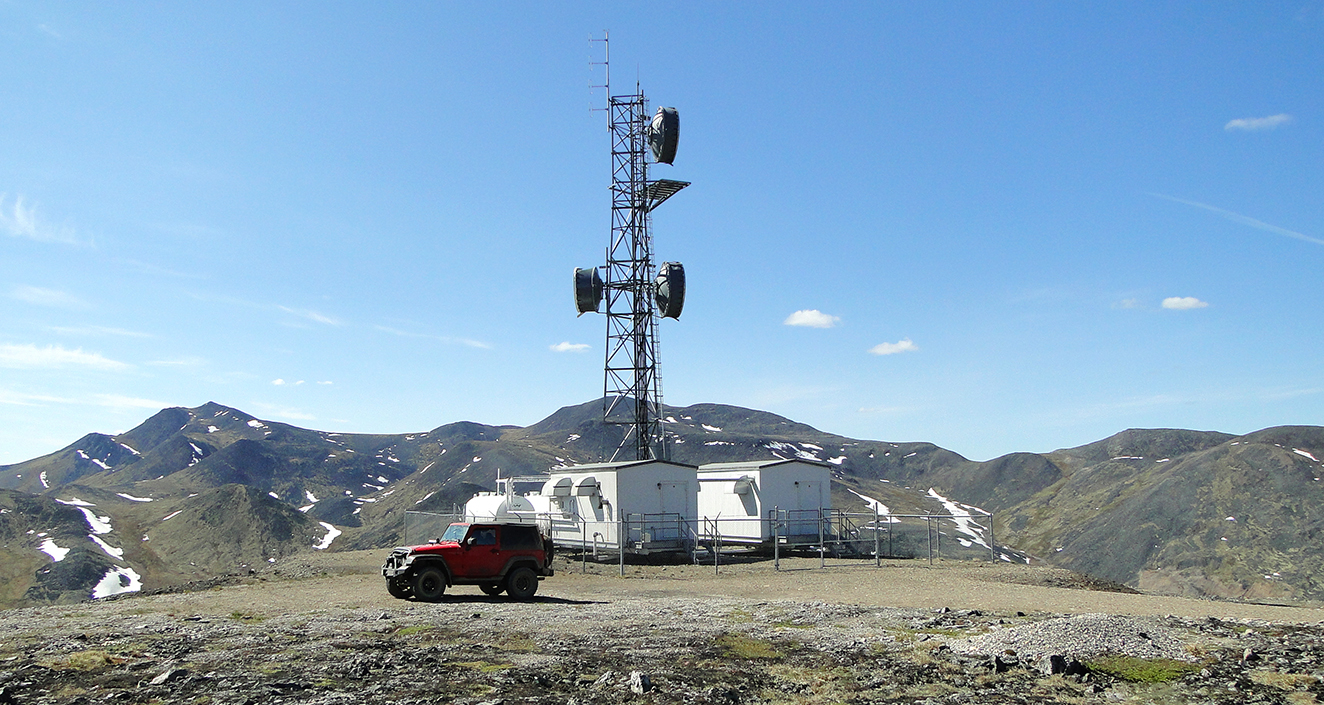Jeep Wrangler JK/JKU Wrangler JL/JLU and Jeep Gladiator
Cell Phone Booster Jeep Off-Road 4x4 Expedition
How to get one bar on your cell phone in the remote wilderness
If there is absolutely no detectable signal in a location, a cell phone booster will make no difference. But are you sure there’s no phone signal at all? Based on my personal off-road experience in Yukon, Alaska, the Northwest Territories, British Columbia, and Alberta, there are way more “live zones” than off-roaders might think when they scout the remote wilderness.

Prepare your first expedition with your Jeep in the extreme remote wilderness. Extending the reach of your phone beyond normal cell phone coverage means more connection opportunities. It could even save your life. Easy to mount antenna on a Jeep.

Take a look at the cellular towers map of Yukon and the Northwest Territories.

Source: Canadian Cellular Towers Map.Steven Nikkel www.ertyu.org
As you can see, there are dozens of “cell sites” scattered across huge territories. And wherever you go, you are never farther away than 200 km (125 miles) from a tall and robust antenna.
1. Cell phone towers are powerful... your cell phone is NOT powerful: No service? If your phone shows no signal, it doesn’t mean that there’s no signal available where you are. To get one bar, your cell phone has to be able to not only receive the signal but also transmit its own signal to the tower. Even if you are surrounded by mountains, ridges, and dense foliage, there might be some weak signals invisible to you. Your little cell phone is just not powerful enough to communicate with the tower. Adding 50 dBto your output power increases your odds of establishing a connection.
2. Cells on wheels: The map above doesn’t show “temporary installations.” The fact is that, from time to time, you may be lucky enough to cross the path/radius of a “cell on wheels.” Carriers use those as a temporary cell site during a disaster (like a major forest fire) or to provide phone coverage for First Nation reserves, remote work sites, or other remote communities. If you carry a signal booster, you might suddenly get one or several bars on your cell phone even ifyou are currently in the most remote location your Jeep can reach.
3. Break distance records (in good weather): Perfect atmospheric conditions may increase the coverage of a cell site to its highest imaginable range. In those conditions, weak signals could travel several miles beyond the normal or believed working range. Those little miracles happen, and off-road adventurers should take advantage of them. When you get stuck for good on an unfrequented trail or a forsaken backcountry road, yon don’t necessarily need emergency assistance. If you stay calm and cool for several days, time and improving atmospheric conditions could finally allow you to ask someone to bring you a spare part or even watch a YouTube tutorial video if you have no clue how to repair something.
4. Reception at high altitude: Unless a potential lightning storm is coming, I always try to spend the night at altitude for three reasons: 1) To appreciate the landscape. 2) I do enjoy listening to AM radio. 3) To improve my odds of getting an Internet connection. A cell phone communicates with a cell tower via radio waves. If you have the opportunity to park your vehicle at the highest possible altitude on a mountain and face a tower in a clear line of sight (without any high obstacles in between), expect incredible results. Once again, your cell phone won’t be powerful enough to connect to a remote tower all by itself, but the signal booster will.
5. Get located by a rescue team: When a hiker is missing in the remote wilderness, rescuers always try to see if the hiker’s cell phone is attempting to establish a connection, or they check when and where was the last time it tried. Only one very short and weak recorded signal could allow rescuers to determine an approximate location. Every year, hikers (although they never got one bar on their cell phone) are rescued that way. I often see off-roaders who carry nothing but a CB radio and a cell phone in the backcountry. If you are one of those guys, I strongly believe that you should (at least) install a quality phone booster in your Jeep. Getting lost or severely injured in the wilderness is not a misfortune that only happens to others.
6. Make friends: As long as it’s powered, the antenna of your booster broadcasts and transmits boosted signals for several users at the same time. So, people using their own phone only have to stand around your vehicle to get a connection (and using their own phone plan, not yours). If you want to become the popular guy at your next Jeep club event, that’s one sure way to surround yourself with a bunch of new friends.
It’s not a fixed figure because too many variables and factors are involved (distance, type of terrain, type of vegetation, weather, equipment used, battery power, and so on). On the other hand, I don’t have much knowledge about how cell tower antennas work (power outputs, frequencies, gains, etc.). The following is only based on two non-scientific experiments using the weBoost Drive 4G-X OTR (trucker version). And it convinced me that this product makes a real difference in the wilderness.

Buy on Amazon.com
------------------------------------------------ |
|
Buy on Amazon.ca
|
weBoost Tested Around Whitehorse, Northwest Territories

Signal across flat land or water :
When driving around the Great Slave Lake (without a phone booster), you will get a signal only when crossing a small town (Fort Resolution, Fort Providence, Edzo, Kakisa) or within the limits of the city of Yellowknife (everywhere no farther than 10km/6mi from the tower).
Around that lake, it’s a huge and forsaken territory where you can go camping without being noticed.
With a 50dB signal booster, you can reasonably expect a perfectly working signal 100% of the time in a range of 40km (25mi).
Beyond that range, I could still get service 25% of the time in a range of 70km (43mi). Worst case scenario, I stayed connected for only two minutes and had to keep trying for ten minutes before the signal came back, but it was enough to read the news or send/receive text messages.
I feel comfortable stating that using the weBoost 4G Truck extends the range by about 40km (25mi) because the signal travels easily across flat land and water.

weBoost Tested Around Dawson City, Klondike, Yukon

Without a signal booster, there’s absolutely no phone service as soon as you leave the Klondike Highway or drive past the small Dawson Airport (heading eastbound). In the Klondike, there is no thick foliage, but steep ravines and tall mountains are everywhere. It’s ugly.
With the booster on, I could still manage to catch a signal (two bars) as far as 18 km (11 mi) from the tower.
Beyond that range, it wasn’t great, but I could still get some impressive results with phone service as far as 32 km (20 mi) from the cell tower (intermittent service 25% of the time).
I’ve never seen any gold-claim owner or worker in the Klondike using a phone booster. It looks like they just give up. Everybody prefers to pay for ultra-expensive satellite phone and data plans.

|
|
Another personal observation I have made: if there is a tower to be seen where I am parked (using binoculars or watching the light blinking in the night), I get phone coverage 100% of the time when using the booster. It happens no matter what the distance is. At an altitude of 500 meters (1,500 feet) over the horizon, you can surely see a tower from a distance as far as 50 km (30 mi) if you get perfect atmospheric conditions. |


|
|
WeBoost 4G Cell Phone Signal Booster (Trucker Kit) The best phone booster for a Jeep Wrangler or any other 4x4 vehicle. Works with carriers : Verizon AT&T Sprint T-Mobile Virgin Mobile Bell Canada Rogers Fido & Several Others. Perfect for Canadian & US remote areas where cell service is spotty to non existent. Manufactured by: Wilson Electronics
Model: 4G-X OTR
4.88 stars based on 80 reviews
$599
New
|
Buy on Amazon.com
------------------------------------------------ |
|
Buy on Amazon.ca
|
|
| More stuff for your Wrangler JK |
|---|
|
Current Product Next product →
|
|---|



